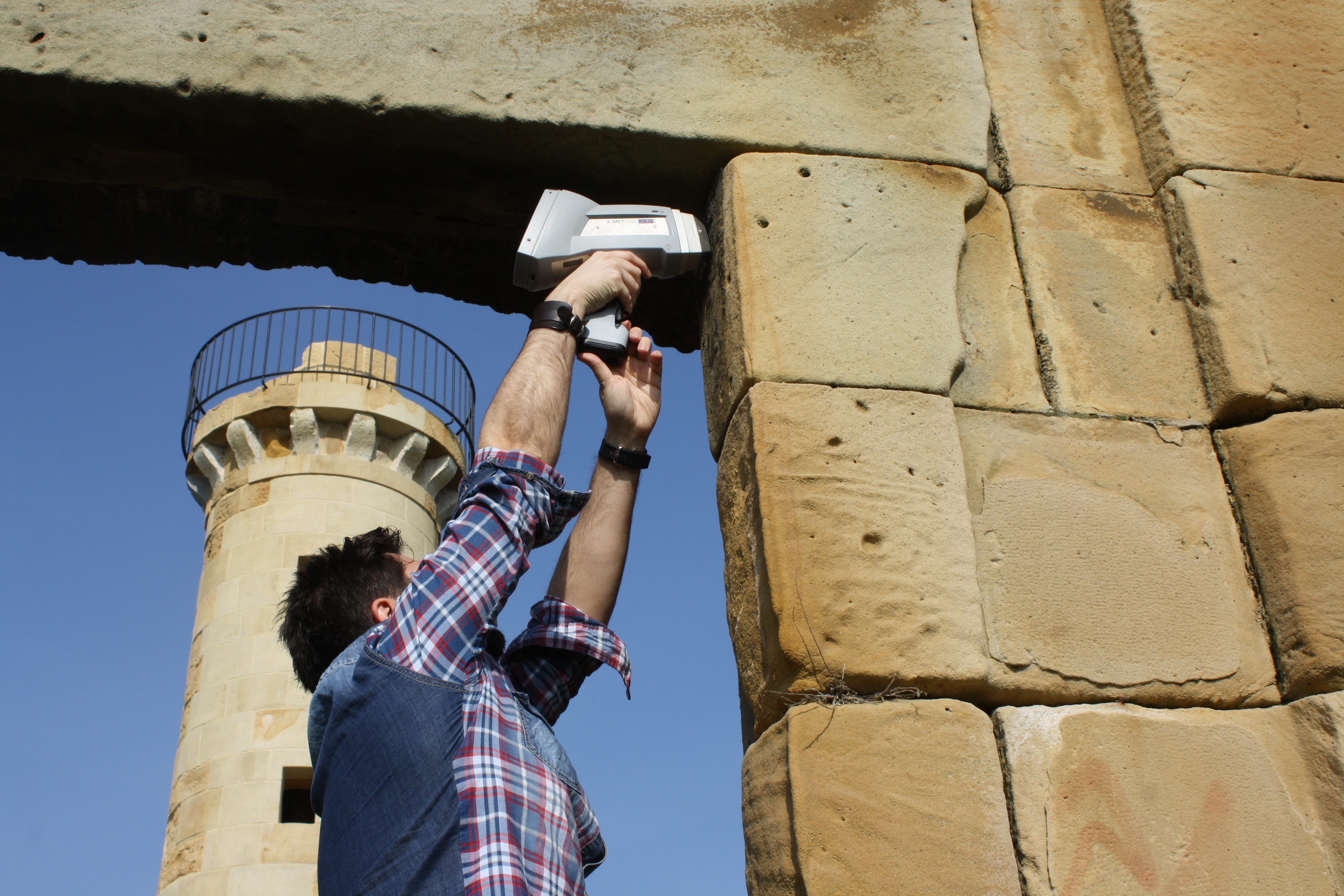The UPV/EHU's IBeA research group has studied by means of various analytical tools the influence that may be exerted by various marine and urban-industrial atmospheres on the state of conservation of three buildings located in different places . To do this, they studied the chemical reactions that take place in different construction materials. All this could help to design possible strategies for new restoration processes of buildings close to the sea.
Chemical study of the influence of the marine environment on historical buildings
A piece of research by the UPV/EHU-University of the Basque Country has helped to understand the deterioration processes in various construction materials caused by the sea
First publication date: 11/01/2016

The marine aerosol is produced by the interaction of the wind and the waves. It is a suspension of inorganic salts and organic matter in minute particles that is transported by the air and with the rain. These particles present in the marine aerosol may undergo different chemical reactions in the atmosphere and they can be deposited on construction materials along with other particles present in urban-industrial atmospheres coming from anthropogenic sources (road traffic, industry, etc.). The interactions taking place between all these compounds and the construction materials may encourage different types of pathologies in these buildings: material loss, formation of salts, cracks, fissures, crust formation, etc.
The researcher Héctor Morillas in the Department of Analytical Chemistry in the UPV/EHU's Faculty of Science and Technology has studied the deterioration processes that various construction materials (sandstone, limestone, plaster, bricks, cement-based material, etc.) may undergo over the course of time in three buildings close to the sea: the Igueldo Lighthouse (Donostia-San Sebastian), which is directly exposed to the sea and is not far from an urban-industrial environment; newly-built houses located in Berango, a place some distance from the sea and in an urban-industrial environment; and at the Galea Fort (Getxo), which is exposed to the direct action of the sea and the urban-industrial environment. All these buildings were built using different construction materials. What is more, the type of environment influences the type of aerosol composition and the type of chemical reactions that take place as a result.
Combination of analytical tools and simulations of chemical reactions
In the research the pathologies found in these buildings were assessed by developing a new analytical methodology based on the combination of various analytical tools (mainly spectroscopic techniques). The methodologies applied in each case in the study help to obtain the necessary information (in terms of the elements and molecules) about the original composition and the products resulting from the deterioration of the different building materials analysed. "The results obtained offer a very specific, concise idea of the state of conservation of the materials studied, thanks to the characterisation of their respective pathologies," explained Morillas.
Having obtained data on the original and current composition at different points on each building, simulations of chemical reactions were used by means of thermodynamic models (pieces of thermodynamic software) to explain the deterioration mechanisms proposed in accordance with the results obtained experimentally.
The knowledge acquired in this PhD thesis has helped "to understand the deterioration processes from the perspective of analytical chemistry that the different construction materials may sustain in locations close to the coast or otherwise owing to the influence of the different marine environments," explained the researcher. This PhD thesis may also help to design possible strategies in the new restoration processes of buildings close to the sea. "That way, in a future building restoration process the right information will be available to do the restoration correctly, and to opt for using certain products or others depending on the pathologies that have formed on them," he concluded. This research work has also resulted in a large number of scientific publications in various prestigious journals.
Additional information
Héctor Morillas (Bilbao, 1981) is a graduate in Chemistry and a doctor in Analytical Chemistry. He wrote up his PhD thesis, Analytical tools applied to the evaluation of the influence of different marine environments on the conservation state of building materials, under the supervision of Juan Manuel Madariaga and Maite Maguregui in the Department of Analytical Chemistry in the UPV/EHU's Faculty of Science and Technology. In this research he had the collaboration of the Monaris research group of the Université Pierre-et-Marie-Curie (UPMC) in France.
Bibliographical references
Morillas, H., Maguregui, M., Paris, C., Bellot-Gurlet, L., Colomban, P., Madariaga, J.M. (2015). "The role of marine aerosol in the formation of (double) sulfate / nitrate salts in plasters". Microchem. J. 123, 148-157.
Morillas, H., Marcaida, I., Maguregui, M., Carrero, J.A., Madariaga, J.M. (2016). "The influence of rainwater composition on the conservation state of cementitious building materials". Sci. Total. Environ. 542, 716-727.
Photo: Mikel Martínez de Trespuestes. UPV/EHU



